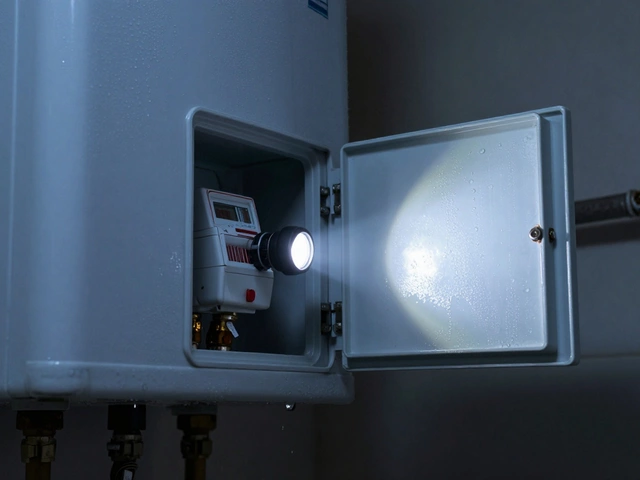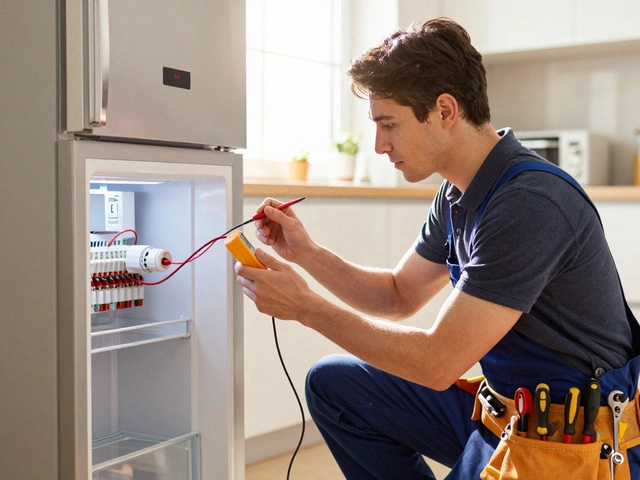Washer Problems: How to Diagnose Them Fast
May 7 2025DIY Microwave Repairs & Tips
Microwaves are handy, but when they quit working it feels like the kitchen’s lost a best friend. The good news? Lots of issues are simple enough to fix yourself – if you follow the right steps and stay safe.
Common Microwave Problems You Can Fix
First up, the microwave won’t heat. Most of the time the culprit is the magnetron, but before you order a pricey part, check the door latch and the fuse. The latch sensor tells the unit it’s safe to run; a mis‑aligned door can stop the timer. Unplug, open the case, and give the latch a gentle clean – sometimes crumbs are the only problem.
Next, weird noises or sparks. Those are usually caused by a dirty waveguide cover or a worn turntable motor. The waveguide cover is a small metal panel near the magnetron; wipe it with a damp cloth. If the motor hums but the plate doesn’t spin, look for a broken gear or a loose belt. Replacing a cheap motor kit is a weekend project for most DIYers.
Finally, a microwave that stops mid‑cycle. That often points to a faulty control board or a blown thermal fuse. You can test the fuse with a multimeter – no reading means it’s dead. Swapping in a new fuse is cheap and quick. If the board looks scorched, it’s safer to call a pro.
When to Call a Professional
Even if you’re comfortable with tools, some jobs are best left to certified engineers. Anything involving the high‑voltage capacitor is risky; a discharged capacitor can still hold a charge and give you a nasty shock. If you see burnt smells, frequent tripping of the circuit breaker, or the microwave simply won’t turn on after checking the basics, it’s time to ring a qualified repair service.
Our team at Bedford Gas Appliance Repair Services also handles gas appliances, so we can check any nearby boiler or heater while we’re there. Combining visits saves you time and money.
Before you start any repair, always unplug the appliance and let it sit for a few minutes. Wear gloves, keep a flashlight handy, and have a basic tool set – screwdriver, pliers, and a multimeter. A quick online search for your exact model will often turn up a step‑by‑step guide or a video that matches the interior layout.
If you prefer to avoid the hassle, we offer a fast, affordable service for all microwave problems. Just give us a call, describe the symptom, and we’ll schedule a visit. Whether it’s a simple part swap or a full diagnosis, we’ll get your microwave humming again.
Remember, safety comes first. Don’t try to repair a microwave if you’re unsure about any step. A small mistake can turn a cheap fix into a costly injury. When in doubt, give the experts a shout.
Ready to tackle that microwave? Grab your tools, follow the checklist, and you might save a few pounds. And if you hit a wall, our certified engineers are just a phone call away.
If your microwave is still under warranty, contact the manufacturer first. Many warranties cover parts and labor, which can save you a lot.
 2 May
2 May
Microwave Oven Repair: How Easy Is It, Really?
Thinking your microwave might just be an easy fix? This article breaks down what you can actually handle yourself, and what stuff really needs a pro. Find out which tools and skills are needed, which parts are most likely to fail, and what’s honestly too risky for a home repair. You'll get straightforward tips, safety warnings you shouldn't ignore, and some surprising reasons microwaves stop working. Save time, money, and maybe a little frustration before you decide whether to grab your toolbox or call in the cavalry.
Read More...



